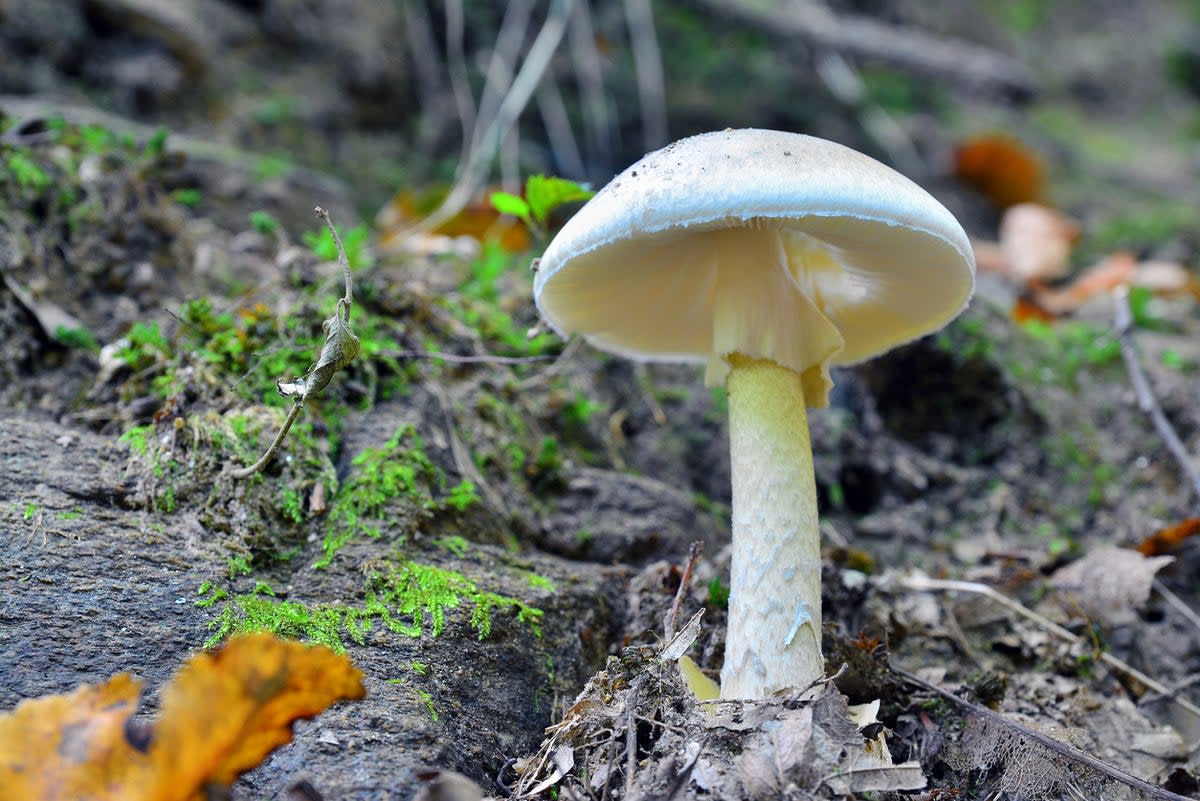Death cap mushrooms: What are the symptoms of mushroom poisoning?

In the Victorian town of Leongatha, in Australia, three people were left dead after eating a beef Wellington dish.
Host Erin Patterson had invited her former parents-in-law Gail and Tom Patterson for a meal together, along with Gail’s sister, Heather Wilkinson and her husband Ian. After the meal, within just a few days, Gail and Tom, both 70 and Heather aged 66, were pronounced dead. Ian, 68 was left fighting for his life.
Victoria Police has described the incident as a “suspected mushroom poisoning”. Detective inspector Dean Thomas said it was not clear what type of mushrooms the guests had eaten on 29 July, but their symptoms were consistent with those from a death cap, a particularly deadly variety.
In a statement, Ms Patterson said that she did not know the mushrooms were possibly poisonous when she prepared the meal in Leongatha, South Gippsland, last month.
“I am now devastated to think that these mushrooms may have contributed to the illness suffered by my loved ones,” the 48-year-old said. “I really want to repeat that I had absolutely no reason to hurt these people whom I loved.”
“I am now wanting to clear up the record because I have become extremely stressed and overwhelmed by the deaths of my loved ones,” she continued. “I am hoping this statement might help in some way. I believe if people understood the background more, they would not be so quick to rush to judgment.”
Speaking about the loss in the community, South Gippsland Shire Mayor, Cr Nathan Hersey, said: “The deaths of three well-respected members of our community – and the serious condition of another – have shocked and saddened local residents, many of whom knew them well.
“They were active in their hometown of Korumburra and had made significant contributions to education, religious and community support organisations. Their loss will be felt greatly and by many.”
The death cap, Amanita phalloides, contains the poison amanitin and is responsible for 90 per cent of deaths by fungus, with half a cap or even less enough to kill a person, according to the Woodland Trust.
Here is everything you need to know about the death cap and mushroom poisoning:
What does a death cap mushroom look like and where can it be found?
The death cap is a large fungus up to around 15cm across and 15cm tall with a domed or white cap and an off-white stem.
These mushrooms can be located in parks, gardens and nature strips, the Royal Botanic Gardens Victoria has said on its website.
It often resides under exotic trees, especially oak (Quercus). There have also been reports of Amanita phalloides growing under Eucalyptus in Algeria and Tanzania, but there have been no confirmed sightings of the death cap away from exotic trees in Australia, the website added.
In Victoria, the death cap is often found widely across Melbourne in suburbs including Ashburton, Burwood, Camberwell, Canterbury, Clayton, Deepdene, East Malvern, Emerald, Heathmont, Heidelberg, Kew, Sandringham, South Yarra, Surrey Hills and Wheelers Hill. In regional Victoria, Death Cap has also been reported from Bendigo, Bright, Castlemaine, Gisbourne and Wandiligong. They can be expected to grow anywhere in Victoria where oaks are planted.
It was first confirmed in Australia in the 1960s, according to Royal Botanic Gardens Victoria, but may have been undetected prior to that.
The death cap appears during the autumn and sometimes winter seasons.
What are the symptoms of mushroom poisoning?
Better Health, which provides health and medical information in Australia, has said there are three main effects of poisonous mushrooms, this includes hallucinations, gastrointestinal illness and liver failure, which can lead to death.
Other symptoms include:
• Confusion
• Muscle weakness
• Agitation
• Rapid heart rate
• Headache
The symptoms of gastrointestinal illness include:
• Nausea
• Vomiting
• Stomach cramps
• Diarrhoea
“About 9 out of 10 fungi-related deaths are attributable to the death cap mushroom (Amanita phalloides),” Better Health has said, and symptoms can occur six to 24 hours after consuming the poisonous mushroom.
Are there any treatments for mushroom poisoning?
If you suspect you or anyone else may have eaten a poisonous mushroom, do not wait for symptoms to occur to seek medical help, Better Health said.
You should try to seek medical attention from the nearest hospital or your local doctor, who will then be able to provide you with the treatment they think is best for you.
In Australia, people are advised to contact the Victorian Poisons Information Centre as soon as possible.
Better Health has said: “It helps to have a sample of the mushroom. VPIC staff may ask you to send them a photo of the wild mushroom to help in the species identification and risk assessment.
“If the person has collapsed, stopped breathing, is having a fit or is suffering an anaphylactic reaction, immediately ring triple zero (000) for an ambulance.”
In the UK, the NHS has advised people showing signs of being poisoned to call 999 to request an ambulance or take the person to their local A&E department.
“In serious cases, it may be necessary for the person to stay in hospital for treatment. Most people admitted to hospital because of poisoning will survive,” the NHS website has said.
